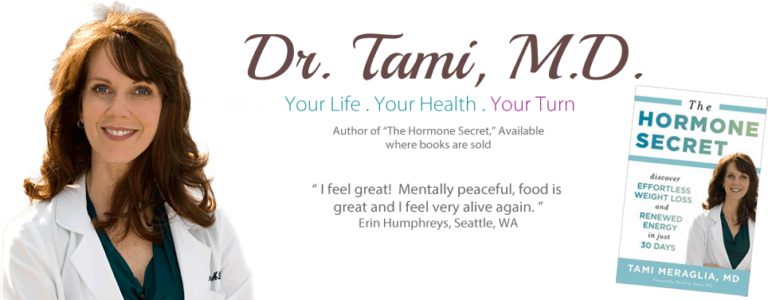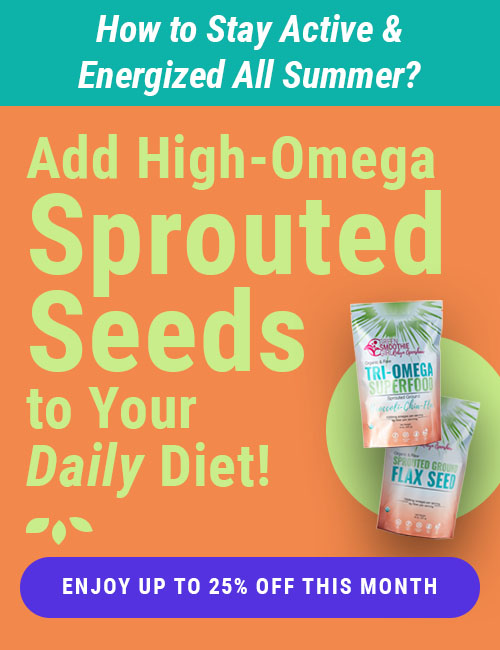Skin & Your Cancer Risk by Dr. Tami Meraglia

I’m excited to introduce you to my friend, Dr. Tami Meraglia, a double board-certified holistic M.D.
Dr. Meraglia is a former professional ballerina and the mother of two young daughters. She’s a healer at heart and I love learning from her. She owns a clinic in Seattle and is the bestselling author of The Hormone Secret. I asked her to share her wisdom about sun, skin, and cancer!
She’s sharing a hot tip about how to inexpensively test yourself for Vitamin D, easily and at home! She gives us a discount with coupon code greensmoothiegirl to her at-home Vitamin D Test. I didn’t know there was such a thing, and I’m ordering mine now!
I’m thrilled to call her my friend and to share this information with you!
From Dr. Tami:
Hi GreenSmoothieGirl followers,
Skin is our largest organ. It serves many functions, including detoxification, heat regulation, keeping us safe from intruding bacteria, and much more. Our skin can also be a source of disease and cancer that can spread to any other part of our body.
Most skin cancer is from UV radiation penetrating the skin. There are 3 types of UV radiation: UVA, UVB, and UVC. I like to call UVA the aging one, as it is linked with aging our skin with wrinkles and lines. UVA can penetrate windows and through cloud cover.
UVB is the one that burns. UVA is thought to be the most dangerous with regard to skin cancer but they all contribute to cellular and DNA damage leading to cancer.
Skin cancer is now at record-high levels and it is thought to be due to our thinning and absent ozone layer. There are over one million cases of the most common types of skin cancer, basal cell carcinoma and squamous cell carcinoma, per year.
The most serious and potentially deadly type of skin cancer is melanoma. Melanoma is now the most frequently diagnosed cancer in American women between the ages of 25 and 29, and the second most frequently diagnosed type of cancer (after breast cancer) among women between 30 and 34. This is a shocking statistic that is rarely addressed when you go see your regular family doctor.
The good news is you can get protected, and I am not just talking about sunscreen. Here are the top 5 risks associated with skin cancer and the 3 things you must do to protect yourself
RISKS
- A severe burn (with blisters) when you were young or more than 5 sunburns (this doubles your risk of skin cancer)
- Light skin that burns easily and rarely tans
- Using tanning beds
- Family history of skin cancer
- Certain types of moles
Even if you have some or all of the above (like myself, with my Irish skin and childhood burns) we can protect ourselves from developing skin cancer:
1. Get your vitamin D level checked and ensure it is 60-100. This is one of the most powerful things you can do to protect your skin, and other areas, from cancer. There is a blood spot test you can do at home.
Vitamin D overdose can be toxic so if you start taking vitamin D be sure to re-check your levels to ensure you are not taking too much. You can get the HOME test for Vitamin D with coupon code greensmoothiegirl.
2. Protection. Years ago I told my patients to go out in the sun and get some natural vitamin D. I now warn my light-skinned patients that this is likely to increase their risk of skin cancer and they should wear protective clothing and hat and stay out of the direct sun between noon and 3 pm. Our ozone was a protective part of our earth and is has been significantly damaged and no longer protects us as well.
3. Know your ABDCE’s to watch moles or other abnormalities on the skin:
- Asymmetry – one side does not look like the other side
- Borders – look for irregular, scalloped or poorly defined borders
- Color – look for different colors within the mole or pigmented area
- Diameter – is it larger than a pencil eraser?
- Evolving – is it changing its size, shape or character (i.e., Does it bleed etc.)?
You can be the CEO of your own health! Enjoy the sun, as it is good for the soul, but protect your skin!
Tami Meraglia, MD
Posted in: Health Concerns













